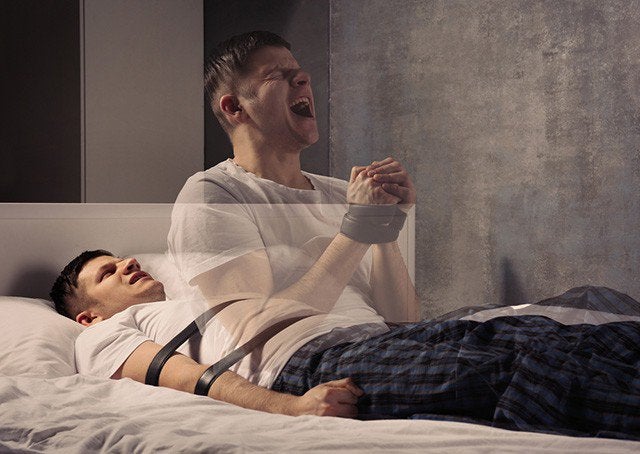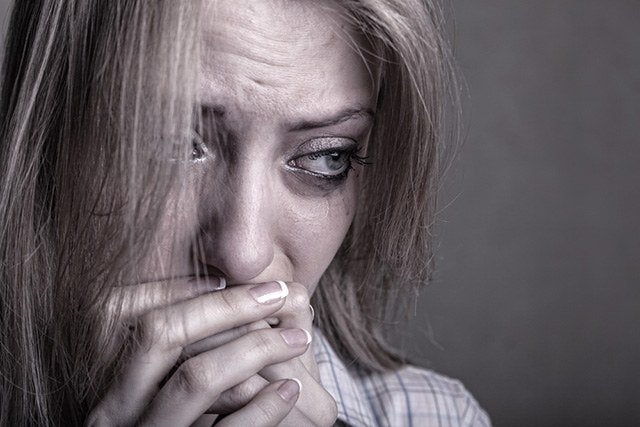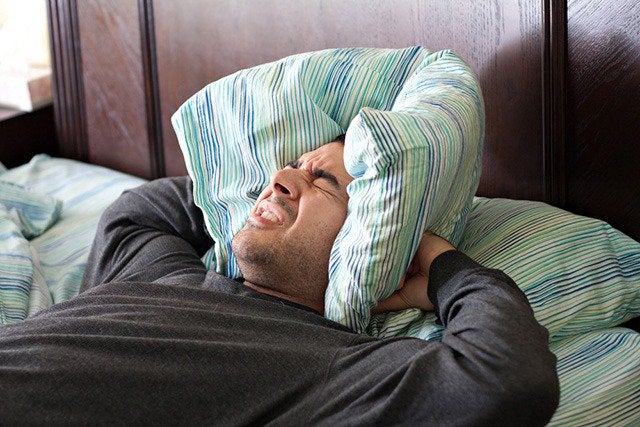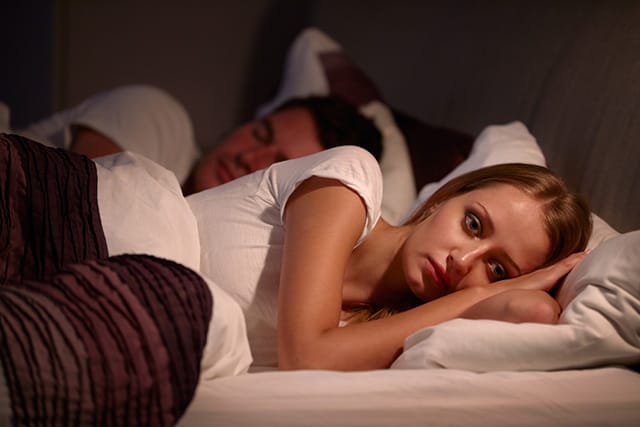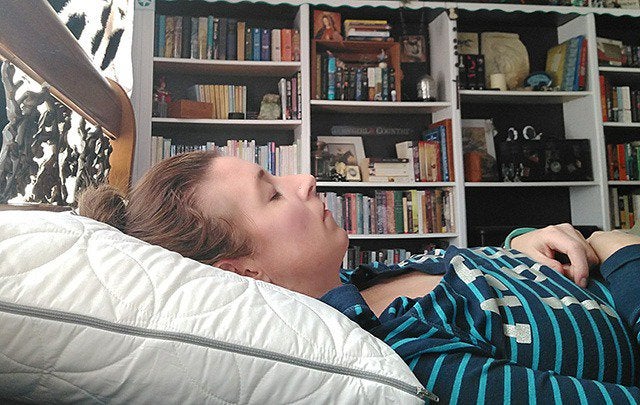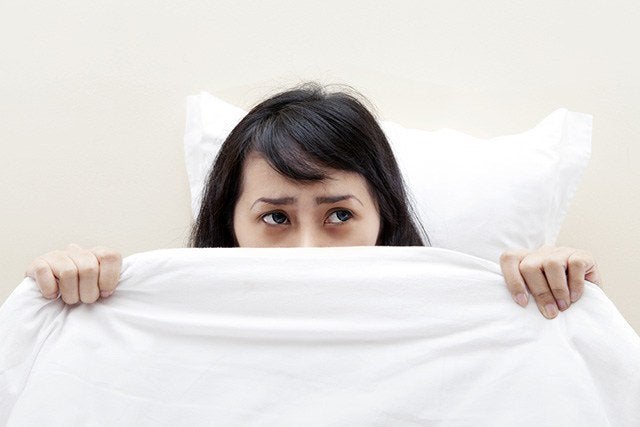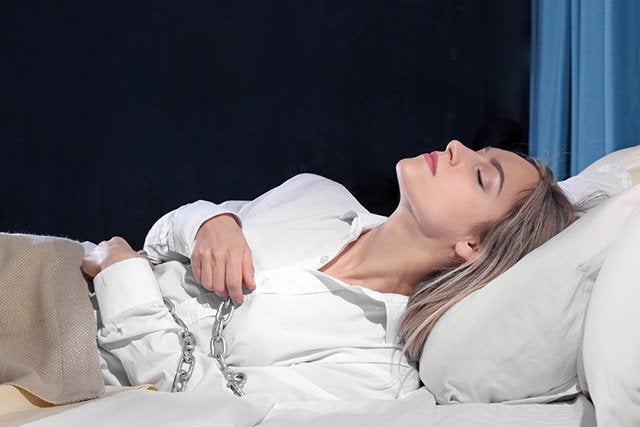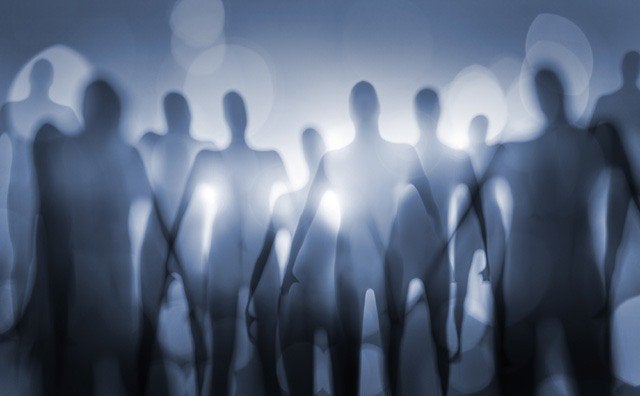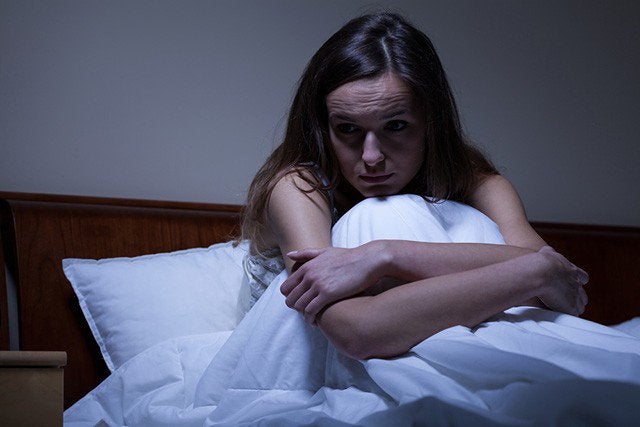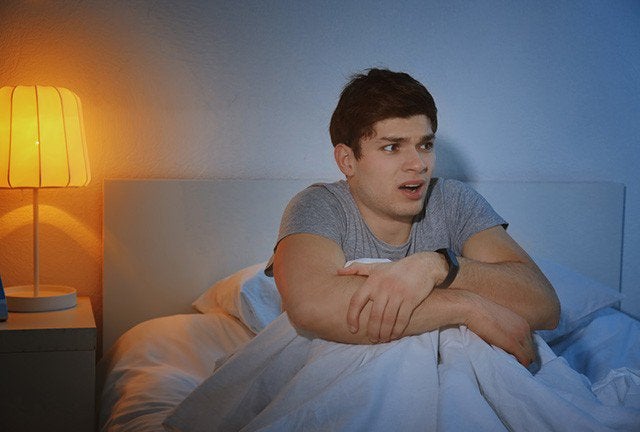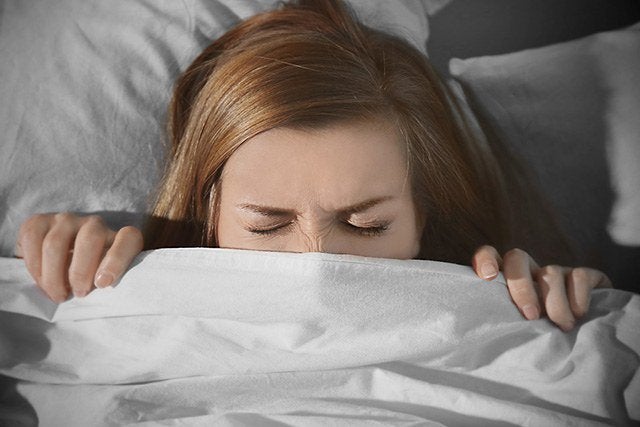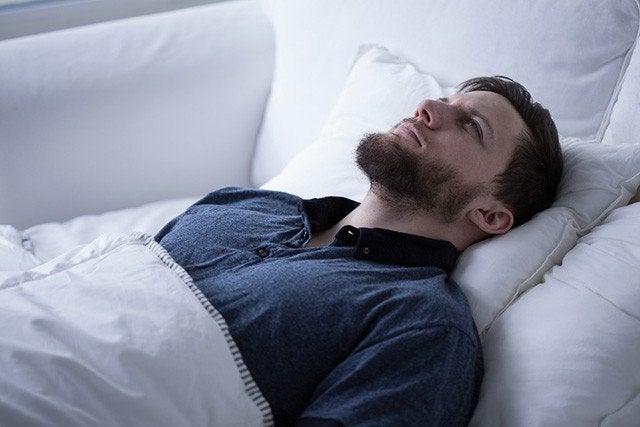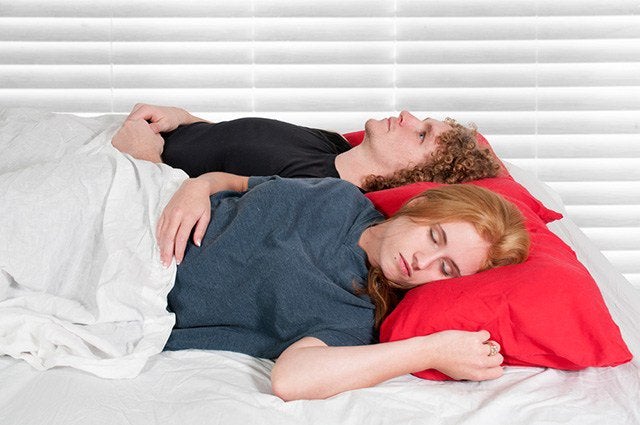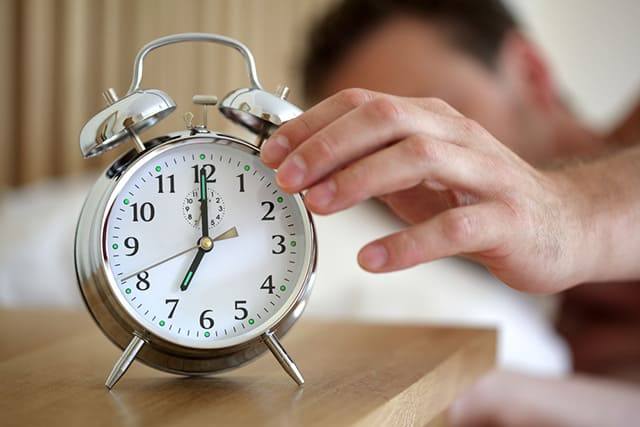It’s the stuff of nightmares and – recently – the subject of several horror movies. Sleep paralysis is a terrifying condition that comes with a number of complications. Classified as a parasomnia, which is an undesired event that comes with sleep, it’s estimated that more than 8 percent of people suffer from sleep paralysis at least occasionally if not chronically.
Because it’s become so common, the sleep disorder is something that psychologists and medical professionals alike have started to address with serious interest. It’s important, especially for those with severe issues and those in high-risk groups, to know how to stop sleep paralysis. To do that, you have to understand the condition, how it can affect you, and what your risk factors are. That can help you determine the dangers involved and how you might be able to treat, get rid of, or prevent it from happening to you on a recurring basis.
What is Sleep Paralysis?
Sleeping paralysis is a condition in which you are unable to move some or all of your body either while falling asleep (known as the hypnagogic or predormital form) or as you are waking up (known as the hypnopompic or postdormital form).
During sleep, your brain sends your body into a state of dormancy or relaxation called atonia. Sleep paralysis involves your brain enacting this condition while you’re awake. Sometimes, this is related to narcolepsy, which makes it a completely different animal and even more difficult to control. The most common form of sleep paralysis is isolated, which means you will not get other signs of narcolepsy.
When you experience sleep paralysis, it can be truly horrifying because it can render some or all of your body paralyzed. It’s hard to overcome. You’re fully aware of what’s going on around you and completely conscious, but in a mild case, you can’t speak. In more severe instances, you can’t move your head, arms, legs, and body. The episode could last for mere seconds or could continue for several minutes. The resulting psychological responses range from anxiety to fear. You may also experience hallucinations during periods of sleeping paralysis, which is the basis for a number of recent horror movies.
Who is at Risk
Sleeping paralysis can literally affect anyone and there doesn’t really seem to be a solid cure for it. However, certain behaviors and conditions seem to point to specific risk factors that increase the likelihood of experiencing sleeping paralysis. For example, those with other sleep disorders that result in frequent waking, such as insomnia or narcolepsy, seem to experience the frightening condition at a much higher rate. Also, shift workers seem to suffer from the condition more frequently, likely due to their unusual sleep patterns and disruption in their sleep.
These, however, are not the only risk factors. Others include:
Trauma
Studies show that people who suffer from post-traumatic stress disorder (PTSD) due to specific traumatic life events and those who suffer panic disorders, often from the same experiences, are at a higher risk of having episodes of sleep paralysis. It’s suggested that the overall conditions lead to higher physiological arousal, which precipitates the sleep paralysis. Also in this category is experiencing periods of extreme stress based on life events and situations.
Anxiety and Depression
In a 2006 study, more than 20 percent of patients with anxiety disorders suffered from sleep paralysis, thought to be caused by sleep disturbances linked with anxiousness. In 2007, another study linked untreated depression (patients that are taken off antidepressants) experiencing elevated rates of sleep disturbances and associations with insomnia, excessive tiredness, and sleep paralysis. Bipolar disorder is also included with these diagnoses.
Sleep disruption
In 2002, a study in which patients were purposely awoken during REM sleep, disrupting the sleep cycle, purposely elicited sleep paralysis with these particular interruptions. The disruptions caused patients to bypass all other sleep stages, like lucid dreaming, and go straight to REM sleep, inducing sleep paralysis.
Insomnia
A complete lack of sleep can cause quick ‘blackouts’ that go directly to REM sleep, similar to states of narcolepsy, which then promote the ‘wakeful’ dreaming and paralysis.
Restless leg syndrome
Because spasms in your legs due to restless leg syndrome and other cramps can severely disrupt restful sleep, it can throw the sleep cycle off, resulting in frequent waking and faster entrance into REM sleep, both linked to sleeping paralysis.
Sleep position
Studies show that sleeping on your back can increase the risk of sleep paralysis for several reasons, including waking often from sleep apnea and snoring, as well as the position itself, is more easily conducive to paralysis.
Medication and illicit drug use
Several links have been found between sleep paralysis and certain prescription medications, including those used for ADHD. In addition, any form of substance abuse has been shown to increase the risk of these occurrences.
In addition, for many, sleeping paralysis issues seem to begin in teenage years, similarly to many of the diagnoses that are associated with the condition (such as depression and anxiety disorders). Studies with identical and fraternal twins, as well as brothers and sisters, have led to the knowledge that genetics can also play a role in how likely you are to experience these episodes.
Fear Factor
Perhaps the reason that sleep paralysis has become such a prevalent conversation recently is probably to due to it being featured in a number of Hollywood horror flicks. But there is a significant basis of truth in these fictional fright fests. Many people experiencing sleep paralysis have vivid, dream-like hallucinations as they fall asleep or wake up. In fact, these episodes feel so realistic that they are literally terrifying. Often, they involve seeing people and creatures or shadows standing over you in the bedroom. On top of this, the paralysis means you can’t fix it with a scream or warning or move to get away from the perceived threat.
Through the centuries, sleeping paralysis was attributed to the appearance of an evil and unnatural presence at night. Various forms have included night demons (in ancient times) and iterations like alien abductions or even the old hag in Shakespeare’s Romeo and Juliet. It’s been a cultural exploration in supernatural means of reasoning out the disturbing occurrences. This is carried through in the imaginations of screenwriters and directors, frightening audiences on a large scale. But scientists and doctors have completed plenty of studies, finding the facts behind the condition.
This is elicited from a boundary between dream sleep and wakefulness being broken or crossed. REM sleep should be entered gradually at the end of the sleep cycle. Instead, the brain sends the individual straight into the REM cycle (as in states of narcolepsy), leaving the body susceptible to the state of dreaming and muscle paralysis that aids in stillness during sleep while still awake. So, the dreams become hallucinations, and you are held without motion as you would be in the late stages of sleep. This is why the condition is often seen in conjunction with people who suffer from narcolepsy.
Describing the Episode
Subjects with sleeping paralysis offer three main descriptions of what they experience in terms of hallucinations during their episodes.
Vestibular motor sensations are extremely common. In fact, many sleepers experience these without ever having sleep paralysis, in the forms of feeling like you’re flying, sailing, floating, falling, or spinning. However, these take on a much more realistic and terrifying sensation during sleeping paralysis since you can’t move but honestly feel yourself in this type of danger.
The incubus is sort of an old myth and terror used to describe another common occurrence, which is the feeling of being held down and trapped. The folklore and tales date back centuries with some form of male demon terrorizing women and a succubus or other female demon terrorizing men in their sleep. The attacks have created a great deal of fear for a variety of cultures, and these are likely some of the haunting images that sparked movie franchises such as A Nightmare on Elm Street.
Perhaps the most terrifying is the feeling that there’s an intruder because that intruder tends to be elusive. You may feel you’re being watched, or you may see a shadowy presence in the room. You might note ‘someone’ standing over you, either with or without a face, or you might have auditory hallucinations of this entity speaking to you. Whatever the circumstances, it feels very real, and the sensation of having someone get into your bedroom while you sleep can continue to disturb you even during waking hours because break-ins are a real possibility.
The Dangers of Sleep Paralysis
While sleeping paralysis doesn’t necessarily cause any real damage physically – though it can lead to loss of sleep and excessive tiredness based on other issues – it can be psychologically damaging. The fear induced by sleep paralysis episodes can cause anxiety, which can disrupt not only sleep but stay with those who experience it. Such anxiety can lead to loss of sleep and even insomnia, as well as a general sense of discomfort. Paranoia and even PTSD may be side effects if not controlled. This is why it’s important to find ways to prevent and deal with the condition, meaning you need to seek the advice of a medical professional regarding any other conditions that may cause you to have episodes of sleeping paralysis.
Diagnosing the Condition
The most notable symptom of isolated sleeping paralysis is an inability to speak or move for several seconds or more while falling asleep or upon waking. While this may help you self-diagnose an issue that should be addressed, it does not mean you shouldn’t seek the opinion of a medical professional. Speak to your doctor if you find that you’re feeling anxious about the symptoms you’re experiencing, are tired during the day due to episodes of sleep paralysis, or the symptoms are severe and keep you up during the night.
To make a diagnosis, your doctor will likely ask you to describe your symptoms in detail, and he may ask you to keep a sleep diary for several weeks to document episodes. He may also refer you to a sleep specialist or have you conduct an overnight sleep study to observe your behavior and the symptoms to help determine if your condition is a symptom of another underlying sleep disorder or is the main problem.
How to Wake Up
The terror induced by sleeping paralysis is very real, mostly caused by a sense of helplessness to stop the occurrences. You can’t move or talk, which means you can’t overcome or get over it, and you can’t alert anyone else to your trouble to help you. If you have some tools at your disposal, though, it can really ease the burden of fear and help you come out of the frightful state.
Surrender
The instinctive thing when you feel like you’re trapped or held down is to fight. In the case of sleep paralysis, this is the wrong thing to do. It causes you to feel more trapped and increase the fear. Heightened fear levels can trigger your brain to create lucid nightmares, intensifying the horror you experience.
Instead of fighting, if you surrender and remind yourself that this is just a bout of sleep paralysis and nothing more, you will more easily snap out of it. Remind yourself that everything is alright, and ease into the pressure you feel instead of fighting against it. This will help reduce that pressure until the point at which you can snap out of it.
Small Movements
This may sound impossible during a state of paralysis, but much of the pressure is concentrated in the chest, belly, and throat with additional pressure on your limbs. The feeling of motionlessness often doesn’t reach the extremities like fingers and toes. Try making a fist or wiggling a toe, similar to the efforts true paralytics attempt in physical therapy. These small motions will send a signal to your brain that you’re awake, and the state of paralysis will fade away.
Breathe
Unlike the muscles in your legs and other parts of the body, your lungs aren’t paralyzed. Your breathing, however, does respond to fear, and that means, it takes a lot of focus and effort to concentrate on measured breathing. However, doing so will ease the pressure on your chest, and it will help control the fear you feel, negating that sensory image of terror to the brain. In doing this, you also control your heart rate, which then calms the rest of your body. These efforts can quickly get things back in order and allow you to snap into full wakefulness.
Another thing you can count on your lungs to do is allow you to make noise, even when you can’t move or speak. When your voice fails you, try coughing. Since this involves no need to use your voice, it won’t be stopped by the paralysis, and you can use this technique to help get the attention of your sleep partner or even to wake up your own mind.
Of course, if this is going to work to get someone’s attention, you have to inform them of the situation. You should share with your significant other what you’re experiencing and what you plan to do to try to get his or her attention during the night when you have an episode. Then, make sure your partner knows what to do to help you awaken from the paralyzed state. If you can speak, you may also want to try ‘help’ as a word you can force out quickly to get your partner’s attention. Your partner will learn to subconsciously listen for a cough or the word and wake up to assist you.
Preventing Sleep Paralysis
While you may not be able to prevent the occasional occurrence of sleeping paralysis, there are ways to assure you do everything you can to minimize the episodes. Getting more sleep is essential to stopping sleep paralysis in its tracks. Seven hours of sleep is about the minimum amount the average adult needs, and getting more sleep allows your body to complete its circadian rhythm so that you don’t drop directly into REM sleep and run the risk of entering into the state of sleeping paralysis.
Another way to adjust and work around these episodes is to create a schedule and routine that keep you on track. Put together a bedtime routine and stick to it. This helps prepare your mind and body to follow a typical routine of falling asleep so that you don’t skip a sleep cycle. Also, go to bed at the same time every night, whether it’s a work night or not, so that your body and mind adjust to that timing and promotes the proper sleep cycle.
Assure that your bed and surroundings are comfortable. Don’t have anything in the space that can distract you and disrupt your sleep routine. In addition, use your bed only for sleeping. Don’t take a phone or laptop to bed, and don’t watch movies from your bed if you can help it. You want your mind to settle into the idea that this is your dedicated sleep space and nothing else.
Don’t eat or exercise close to bedtime. You should stop eating at least 2 hours before lying down to allow your food time to settle and start digesting, avoiding any physical or psychological side effects that might ensue. By the same token, exercise induces the production of endorphins, which will keep you awake longer, which then runs the risk of sending you straight into REM sleep when you lie down. Make sure you exercise in the morning or early afternoon to avoid consequences such as sleep paralysis. This also goes for caffeine – you should shut off your caffeine intake by late afternoon so you aren’t subjected to the side effects.
Do not eat close to bedtime
Do not exercise close to bedtime
Stop caffeine intake by afternoon
Herbal Remedies
There are plenty of herbal supplements that will promote a healthy sleep routine and avoid your mind’s determination to break the sleep cycle and cause sleep paralysis as a result.
Valerian root is a mild sedative that assists with falling and staying asleep but shouldn’t be taken if you’re using certain other medications and should be used as a temporary solution in moderation.
Passionflower is good for reducing anxiety and lowering blood pressure. If you’re already taking blood pressure medication, this might not be the best solution, and you should avoid it if you’re pregnant.
Chamomile tea reduces anxiety as well and can help ease you into sleep. However, it can react with several other medications, including sedatives, blood thinners, diabetic medications, and blood pressure medications.
Lemon balm improves the quality of sleep and can work well in conjunction with valerian root or chamomile. Avoid it if you have an overactive thyroid or are pregnant.
Lavender essential oil massaged into the hands and wrists can be a great comfort and help you sleep better. Blend a few drops of almond or coconut oil to help it spread and absorb better, and breathe in the aroma deeply before going to bed.
The Bottom Line
Sleep paralysis can be terrifying, and it affects millions of people across the planet on a regular basis. It can turn into a vicious cycle, causing anxiety and resulting from anxiety. It’s essential to take steps to better understand any underlying causes of your experiences with sleep paralysis so you know how to deal with it. Sometimes, it’s necessary to get medical treatment for other conditions that lead to these frightening episodes, while other times, you merely have to employ some meditation tactics and use a few aids to get you through.
Make sure you have a regular sleep pattern and don’t deviate if at all possible. Try breathing techniques to get you through when you do have sleep paralysis rather than fighting the feeling. Fighting makes it worse, and breathing reminds the body that you’re not completely paralyzed. Controlling that breathing helps the brain process that you’re awake, so you can more easily snap out of the state.
Talk to a medical professional about your condition and your symptoms if you think you have sleep paralysis problems so you can work to get a better, uninterrupted sleep. And most of all, know that you’re not alone and that others suffer as well. This might help you better process the whole experience.

